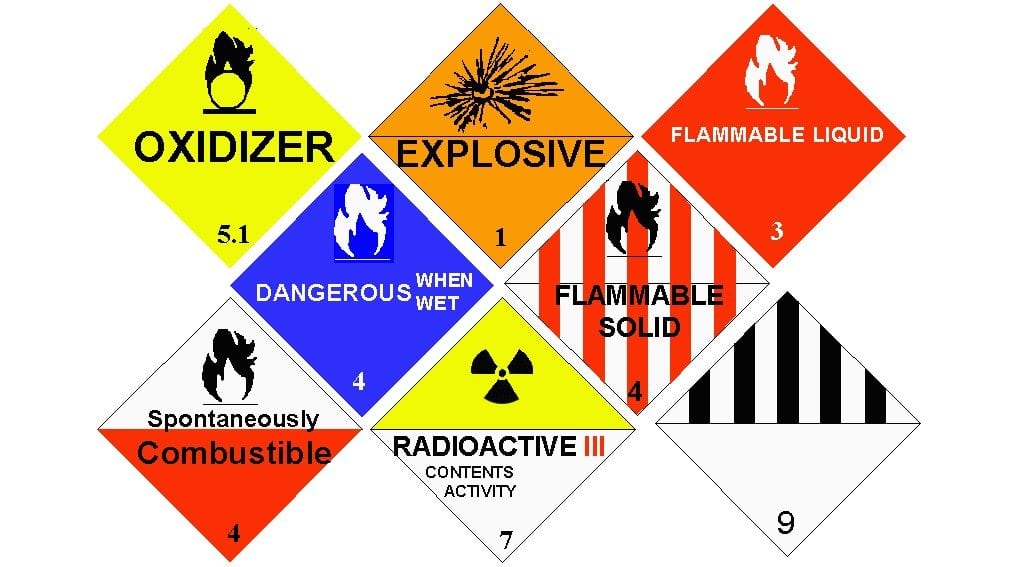What Items Require Hazmat Shipping?

Over $56 million in damages resulted from nearly 6,000 hazardous material (hazmat) incidents in-transit during 2016 as reported by the Pipeline and Hazardous Materials Safety Administration. The U.S. Department of Transportation (DOT) classifies these materials by the unreasonable risk they pose to health, safety, and property during their transportation. The DOT sets the standards that must be followed when moving these types of materials.
Truck drivers transporting hazmat materials are required to be licensed to ensure they are trained to transport them safely. They are also required to know how to handle emergency situations in case of spills or other contamination while in transport. Truckers must clearly mark these materials according to their classification.
Following is a list of the nine hazmat classes and some items that fall into each:
Classes of Hazardous Materials
Class 1 – Explosives
- Adhesives that contain flammable solvents
- Aerosol Products
- Anything pressurized
- Signal Flares
- Cigarette Lighters
- Dynamite
Class 2 – Gasses
- Airbags containing compressed gas
- Air conditioning equipment
- Breathing Apparatus
- Oxygen tanks
Class 3 – Flammable Liquids
- Liquor (140 proof/70% or higher)
- Perfumes with an alcohol base
- Mouthwash
- Nail Polish
- Anything containing hydraulic fluids
- Aircraft and auto parts
- Cryogenics
Class 4 – Flammable Solids
- Barometers
- Thermometers
- Matches
Class 5 – Oxidizers and Organic Peroxides
- Dry Ice
- Cleaning Products
- Biologic samples
- Fertilizers
Class 6 – Toxic Materials and Infectious Substances
- Potassium cyanide
- Pesticides
- Pathology Specimens
- Used Needles
- Virus Cultures
Class 7 – Radioactive Materials
- Uranium
- Plutonium
Class 8 – Corrosive Materials
- Batteries
- Anything containing batteries
Class 9 – Miscellaneous Dangerous Goods
- Magnets
- Anything containing magnets
- Inflators
- Hazardous Waste
- Asbestos
Other Considerations
Anything containing a Material Safety Data Sheet (MSDS) may reveal a hazard and should be analyzed by an expert before being transported. Always consider things such as power tools or anything with a motor that may contain fuel residue. Cosmetics sometimes contain flammable liquids.
Construction, drilling, and mining equipment can also contain a variety of hazards such as batteries, traces of gasoline or heating fuels, or paints and paint thinners. Camping, hunting, or lawn equipment may contain batteries or fuel. Even office supplies may contain aerosols, printing ink, or batteries. Also consider photographic supplies, swimming pool supplies, weather equipment, and vaccines which all may contain or be preserved by hazardous materials.
Most hazmat items are clearly classified as a potential threat while others are not so obvious. Always think about what materials were used to make a product, what they may contain, and what may be used to preserve them. It is imperative to know the safety of the products you transport. Always make sure of the hazmat status of any product before moving it and follow all safety procedures associated.
Contact Tri-State Secured Motor Transit
At Tri-State Secured, our mission is to provide our customers with the highest level of security, safety, and on-time delivery. Contact our team to get started today!
